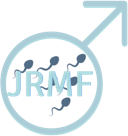A Commentary on ‘The Renaissance of Male Infertility Management in the Golden Age of Andrology’
This is a very helpful review article. The historical details are both interesting and compelling, and the look to the future based upon our current understanding also gives us all considerable pause for thought and of course enterprise.
The starting point of this review is all about the ‘assisted reproductive technology effect’ (the ART effect). This is a relegation of men to the role of sperm donors and, if this is male factor, this of course causes even more emasculation to the patients. We start from a new concept that male infertility is in fact a disease, and the global burden of disease study shows quite clearly that this disease is increasing at 0.291% per annum. If indeed we did, which we do not, regard male fertility as a disease, this would be headline news, but such statistics should be handled carefully by doctors and especially by journalists. Any topic which is global, behavioural, societal, economic and has both sexual and gender implications, is an easy target for both the media and for journalism. Not surprisingly, the terms ‘spermageddon’ and ‘sperm apocalypse’ have been coined and can cause considerable unnecessary alarm in our patients.
So the current renaissance in andrology is certainly timely, but professionals need to manage this popularism with care. The apparent reduction in fecundity worldwide must be a marker of declining fertility – amongst many other societal changes – but this should be the stimulus to considered research, rather than allowing or facilitating too much speculation.
But clearly there is sufficient circumstantial evidence to convict environmental factors, and particularly endocrine disruptors, in the overall picture of declining sperm counts and declining fecundity.
Extended andrological tests and a more cooperative approach between andrologists and gynaecologists have revealed, not surprisingly, the obvious conclusion that 50% of the problem (not, as was traditionally quoted, 30%) relates to male factors, but female reproductive physiology has also changed; an earlier menarche means an earlier menopause and societal changes have meant that more women are delaying their attempts at first conception to after their thirtieth birthday.
The established association of male infertility and subfertility to men’s health is beginning to be accepted, but whilst doctors are beginning to be on board with this we are still a long way from believing, let alone knowing, that an abnormal semen analysis is indeed a surrogate marker of men’s health.
I would certainly agree that andrology is beginning to emerge from the Middle Ages, in which ART was acknowledged wrongly to be the only ‘treatment’ for male fertility. A ‘solution’ in 25% of cases, yes, but no, not a ‘treatment’.
If a renaissance starts with a new awareness, then we have reached that point, but enlightenment – the next phase – can only result from new inventions. The measurement of sperm DNA fragmentation (SDF) and its clear relationship to oxidative stress has been an important invention. Microsurgical testicular sperm retrieval is an invention to facilitate the ‘solution’ but still falls short of a treatment.
There have however been two important areas of renaissance which can I think be regarded as enlightenment, because in both cases ART may actually be avoided.
The first is varicocele, which as an effective treatment of male fertility has been recently and conclusively reinvented. Acceptance of the validity of varicocele treatment has been aided by better diagnosis – varicocele measurement – and better fertility measurement by DNA fragmentation.
The second is the now accepted role of lifestyle changes, diet and nutrition. Once again the role of improved diagnostics, SDF, and measurement of levels of oxidative stress have been instrumental in demonstrating the benefits of these more personal interventions.
But true ‘enlightenment’ can only be realised by more sophisticated genetic diagnostics, because we cannot measure the epigenome. The recent confirmation of the complete Y-chromosome structure, and probably the use of AI to interrogate the genome, will be pivotal to our understanding of the currently unexplained.
Therefore, we look forward to enlightenment, which will continue to explain what is currently unexplained, but is desperately sought by urologists, andrologists, nutritionists and patients alike.
Only when we have a proper genetic explanation will we be able to intercept, and possibly even to modify by CRISP/Cas9, such cases.
The Age of Renaissance will only move to enlightenment when we can explain and treat nonobstructive azoospermia, rather than trying to find solutions only relying on sperm retrieval and ART.

0 Comments